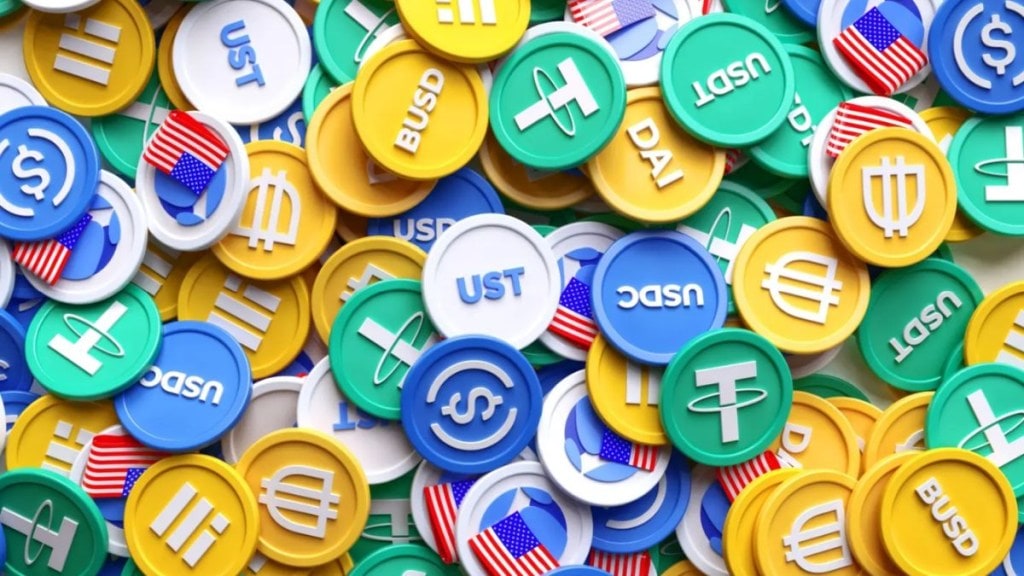By A Damodaran
The buzz about a possible global monetary reset was in the air, long before US President Donald Trump signed the Genius Act in July. Since March, the US dollar has been weakening in relation to gold and other leading currencies. The gap between the US dollar index and the price of gold and Bitcoin has been continuously widening since June.
However, the Genius Act does not seek to address any of these problems. Rather, its focus is to assure the supremacy of the US dollar as the principal reserve currency of the world by turning it into a faster and efficient payment medium. The latter is sought to be achieved by hitching the dollar to a new class of stablecoins.
Stablecoins, which are crypto tokens minted on smart contract blockchains like Tron, Solana, and Ethereum, are unhinged from time-consuming payment and settlement processes. Besides, they assure stable value for crypto assets, which are prone to high price volatility.
Under the Genius Act, a new set of “payment” stablecoins titled the “USAT” will be issued by Tether International for circulation within the US. Every unit of USAT is pegged at a 1:1 basis with the US dollar and/or other eligible reserve assets including short-term Treasury Bills.
In this scheme of things, the focus is on maintaining the stability of the peg underlying the stablecoin. The arrangement does not seek to defend the dollar from weakening vis-à-vis gold or other competing currencies of the world.
Since it is pegged to the US dollar and represents a claim on US dollar, the USAT indirectly seeks to ensure its ascent as the pre-eminent unit of account in the world. Moreover, the new stablecoin is expected to boost demand for short-term US Treasury Bills. This, in effect, means that the grand “US debt show” will go on for some more time.
Tether, a private company, has been presumably chosen for the task as it is the progenitor of the USDT, the world’s premier stablecoin collateralised by the US dollar. From Tether’s viewpoint, a robust and well-functioning USAT will strengthen its legacy coin, the USDT, through complementary effects. As the issuer of USAT, Tether International will be periodically audited by the US government agencies to ensure that the coin complies with the reserve requirements laid down under the Genius Act.
What is perhaps the most significant outcome of the USAT system is the dollarisation of crypto digital assets.
Assessing India’s response
Indian crypto investors have displayed a strong affinity for stablecoins. The share of stablecoin trading in India’s regulated crypto exchanges is estimated to range from 50-70% of total volumes. For some risk-sensitive investors, Stablecoins like USDT serve as a bridge between the rupee and altcoins. For many others, these coins are “slippery assets”. The latter viewpoint may change with the Genius Act.
Once the USAT gains currency, India’s regulated exchanges will witness the predominance of “USDT-Bitcoin” trading pairs due to spillover effects. This could lead to an increase in the flow of the rupee for crypto transactions, which, if left unchecked, could weaken it vis-à-vis the dollar.
However, in the wake of the Genius Act, India cannot afford to keep away from the crypto ecosystem. Apart from revenue reasons, control over crypto assets is critical for India to obtain a share in the rapidly growing global digital asset infrastructure involving decentralised finance (DeFI).
India’s stakes in DeFI have increased in recent years, partly due to a large investor base in this domain and partly due to a rich talent pool of DeFI platform developers of Indian origin, currently operating from off-shore bases like Singapore and Dubai, who would like to move back to India.
Interestingly, DeFI platforms too rely on stablecoins as collaterals to prevent liquidation risks. There is, therefore, a compelling case for India piloting a rupee-pegged stablecoin system which could be utilised for risk- proofing trade in crypto digital assets and checking the play of dollar assets like USAT in India’s crypto exchanges.
Admittedly, a stablecoin pegged to a non-global currency like the rupee may, in its initial phase, suffer from insufficient demand, low liquidity, and risks to the country’s foreign exchange reserves. However, if India’s payment stablecoin is de-linked from the e-rupee and built on the foundations of non-utilised rupee reserves, the results could be phenomenal.
It is estimated that such holdings held in our vostro accounts are worth $8 billion.
If these holdings are utilised as reserves to support an Indian payment stablecoin, it could lead to demand for digital assets created in India, while at the same time providing a productive outlet for idle rupee reserves. Further, rupee-based stablecoins would also come in handy as collaterals for the DeFI platforms functioning in India.
The success of a rupee-pegged stablecoin would depend on the ability of investors to adhere to vostro treasury norms as well as the Reserve Bank of India’s settlement norms on rupee-based trade transactions. Nevertheless, a rupee-pegged stablecoin is an idea whose time has come.
The author teaches at IIM Bangalore and is Senior Visiting Professor, ICRIER, New Delhi, and Ahmedabad University.
Disclaimer: Views expressed are personal and do not reflect the official position or policy of FinancialExpress.com. Reproducing this content without permission is prohibited.

